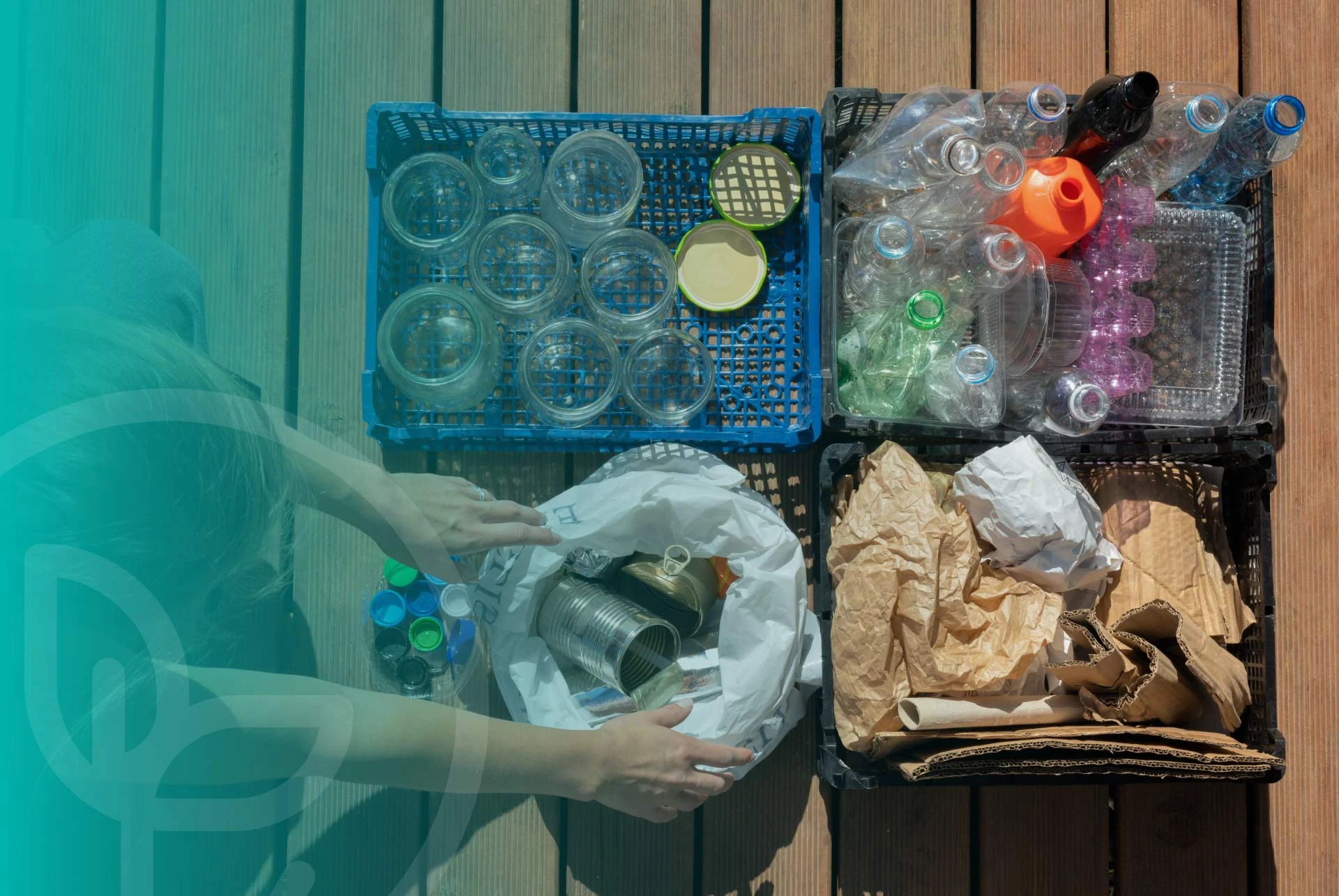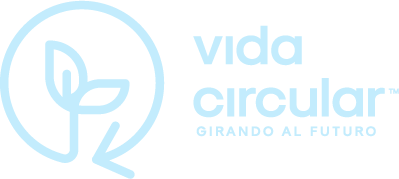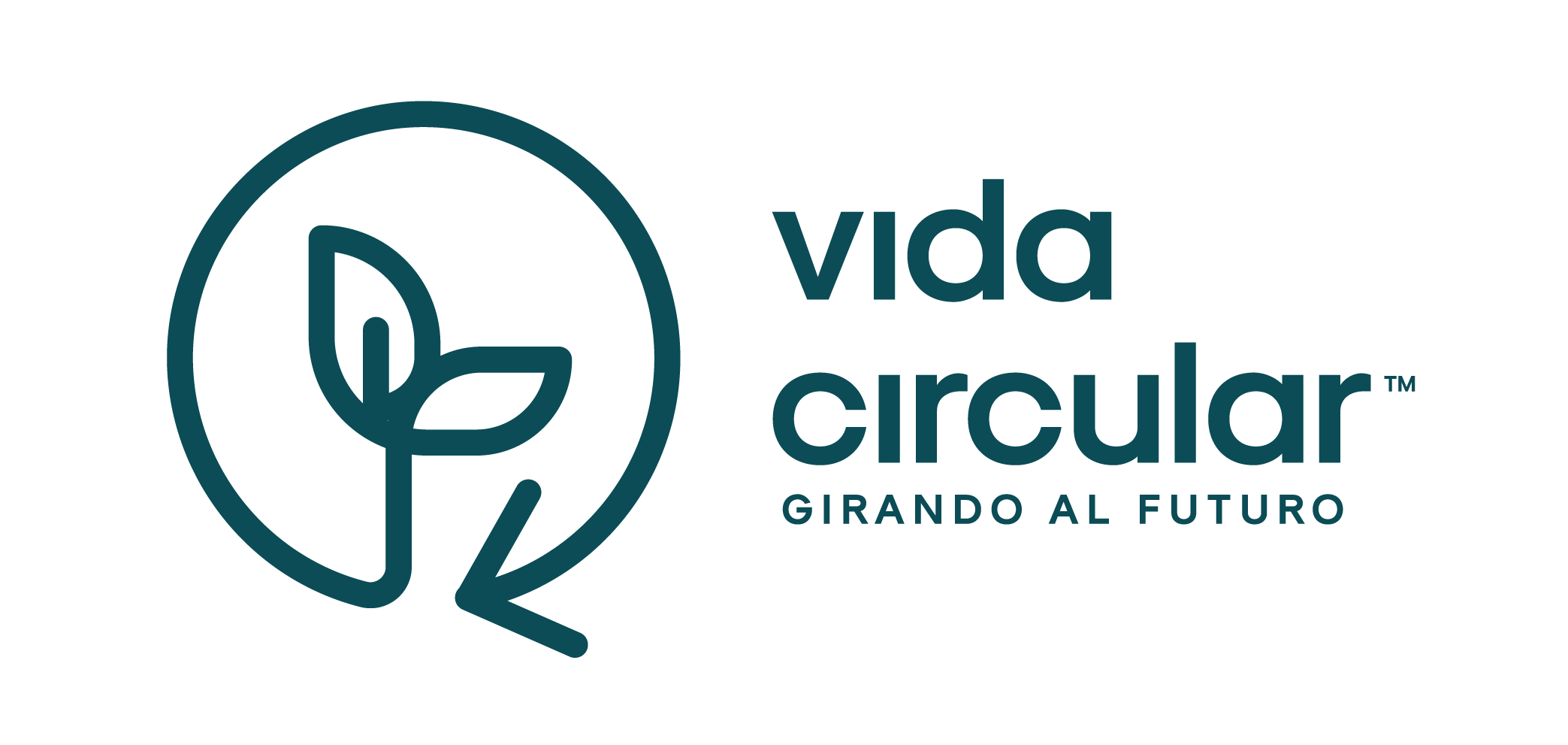
Easy guide on how to separate garbage correctly
1. Know the types of waste you generate at home.

2. Use color coding for containers.
When we talk about how to separate garbage at home, a very practical and visual way is to use a color system for the bins. containers. This will help you quickly and efficiently identify where each type of waste goes, making separation much easier for everyone in the household. Here's how you can implement this method at home:
- Green: This color is ideal for organic waste, such as food scraps, fruit peels and vegetables. fruit and vegetabledried leaves or coffee grounds. These wastes can decompose naturally and if you have space, you could even turn them into compost through composting, providing nutrients to your plants.
- Blue: Use this container for cardboard boxes, magazines, office papers or any other material of this type. Before throwing them away, make sure they are not dirty or wet, as this could complicate their recycling.
- Yellow: This is the color assigned for plastic containers. plastic containers, water bottles, aluminum cans and other similar products can go in this container. Ideally, these materials should be clean and dry to facilitate recycling.
- Gray or black: This is the container for non-recyclable waste, also known as non-usable or colloquially as garbage. This is where things like non-recyclable food wrappers, dirty napkins or diapers should go. These wastes cannot be reused, so it is important to separate them so as not to contaminate the other materials.
- Red: This container is reserved for hazardous waste, such as batteries, chemical products or electronic devices. These wastes require special handling, so it is essential to separate them and take them to appropriate collection centers to prevent them from causing damage to the environment.
Implementing a color system at home makes it easier to separate garbage and educate your family about its importance. By using a container for each type of waste, you avoid mixing recyclables with non-recyclables, optimizing recycling and helping a more sustainable environment.

3. Reduce and reuse before disposal
When you think about how to separate garbage at home, it is important not only to focus on separating waste, but also on reducing the amount of waste you generate and giving a second life to some objects. Before throwing something away, ask yourself if you really need to throw it away or if you can give it another use. This simple change of mindset can minimize waste and help extend the life of many products in your home. Here are some practical tips to get you started:
- Reuse what you can: Before you throw away a glass jar or cardboard box, think about how you could reuse it. Glass jars are perfect for storing food or using them as decorative vases. Cardboard boxes, on the other hand, can be reused to store items or make school crafts with the kids. Reusing not only reduces waste, but also saves you money on products you will no longer need to buy.
- Repair instead of discarding: Many times we throw away items that can still function. A simple repair can extend the life of your appliances for much longer. Likewise, instead of throwing away a broken garment, you could try sewing it up and giving it a second chance.
- Buy durable products: When buying new, opt for good quality products that are designed to last. In the long run, this reduces the need for constant replacement and therefore generates less waste.
By adopting these practices in your daily life, you not only reduce the amount of waste that goes into your garbage cans, but you also encourage more conscious consumption. more conscious and responsible and responsible consumption. Reducing and reusing are two great allies for a more efficient waste management at home and at the same time, they are essential steps to take care of the environment.
4. Do you know where your waste goes? Take it to the right recycling center
In many cities in Mexico there are collection centers and recycling and recycling programs that receive different types of waste, such as plastics, glass and electronics. To ensure that your waste is handled correctly, it is useful to investigate what options exist near you.
In addition, social media can be a great resource for finding people or groups that collect recyclable waste at your home. There are many local initiatives where they organize to come by your house and take the materials to recycling centers, which is very convenient if you don't have time. You can also take the initiative in your neighborhood: organize with your neighbors a joint collection of recyclables and assign shifts so that every week or every month someone different takes them to the nearest recycling center. It's a simple way to help the environment and create a more connected and engaged community. At the end of the day, the important thing is to find ways to facilitate the process and make it easier to separating waste a natural part of the daily routine.
5. Make separation a habit
To separate garbage at home, make it a daily habit. Be consistent and make it easy by placing containers in places accessible to everyone.
Thus, waste separation will become a natural part of your routine. Share this practice with family, friends and neighbors to multiply the positive impact on the environment. Change starts with you, but it grows when you share it.

Trash or recyclable? Easily tell the difference
We often use the word "garbage" to refer to everything we throw away, but in reality not everything we throw away is garbage. As we mentioned earlier, inorganic, non-usable waste is what we truly call garbage, that is, that which no longer has any value and cannot be reused or recycled. This includes used diapers, cigarette butts, food wrappers that are not recycled, or heavily processed food scraps. These are the wastes that inevitably end up in landfills because they have no further use.
On the other hand, there is recyclable waste, which are materials that, after use, can be transformed into new products. This includes things like plastic bottles, packaging, glass, aluminum cans, paper and cardboard. If we separate them correctly, this waste does not have to end up in the trash; it can return to the productive cycle and help reduce the use of new resources.
It is key to learn to differentiate between what is really garbage and what can be recycled. Making this distinction at home, when separating our waste, not only helps reduce the amount of garbage that goes to landfills, but also contributes to the care of the environment. In the end, not everything is trash; learning to separate correctly can make a big difference.
The first step in recycling begins with proper separation.
We tend to think that by separating our waste at home we are already recycling, but the reality is that recycling is a much more complex is a much more complex process that goes beyond what we do in our homes. We do not recycle as such; it is the industries that are in charge of collecting, classifying and converting these materials into new products. However, our role is very important in separating waste correctly from the beginning.
By doing it right at home, we make it easier for these materials to reach those who transform them in good condition. If we mix them with garbage, we complicate the whole process and may even prevent them from being recycled. So, even if we are not directly recycling, our part is key. With careful separation, we help reduce what ends up in landfills and reduce the environmental impact. In the end, separating well is a small gesture with a big impact on recycling.

Conclusion on the importance of how to separate garbage at home.
Separating garbage at home may seem simple, but it has a greater impact than we imagine. By doing so, we not only organize our waste, but we take responsibility for distinguishing between trash and recyclables. This simple act at home facilitates the entire recycling process.
Every time you separate correctly, you are helping plastics, metals, glass and other waste to arrive in good condition to those who can give them a second chance. It's not about making the whole process complicated, but about starting at home with simple actions. The next time you throw something away, ask yourself: Is it trash or can it be recycled? That little thought will make a big difference. Separating correctly not only reduces what ends up in landfills, but is also your direct contribution to a more conscious and sustainable world. Your effort is the first step in making those materials valuable again and, together, we can make a positive impact on the planet. Being part of the change is in our hands!




